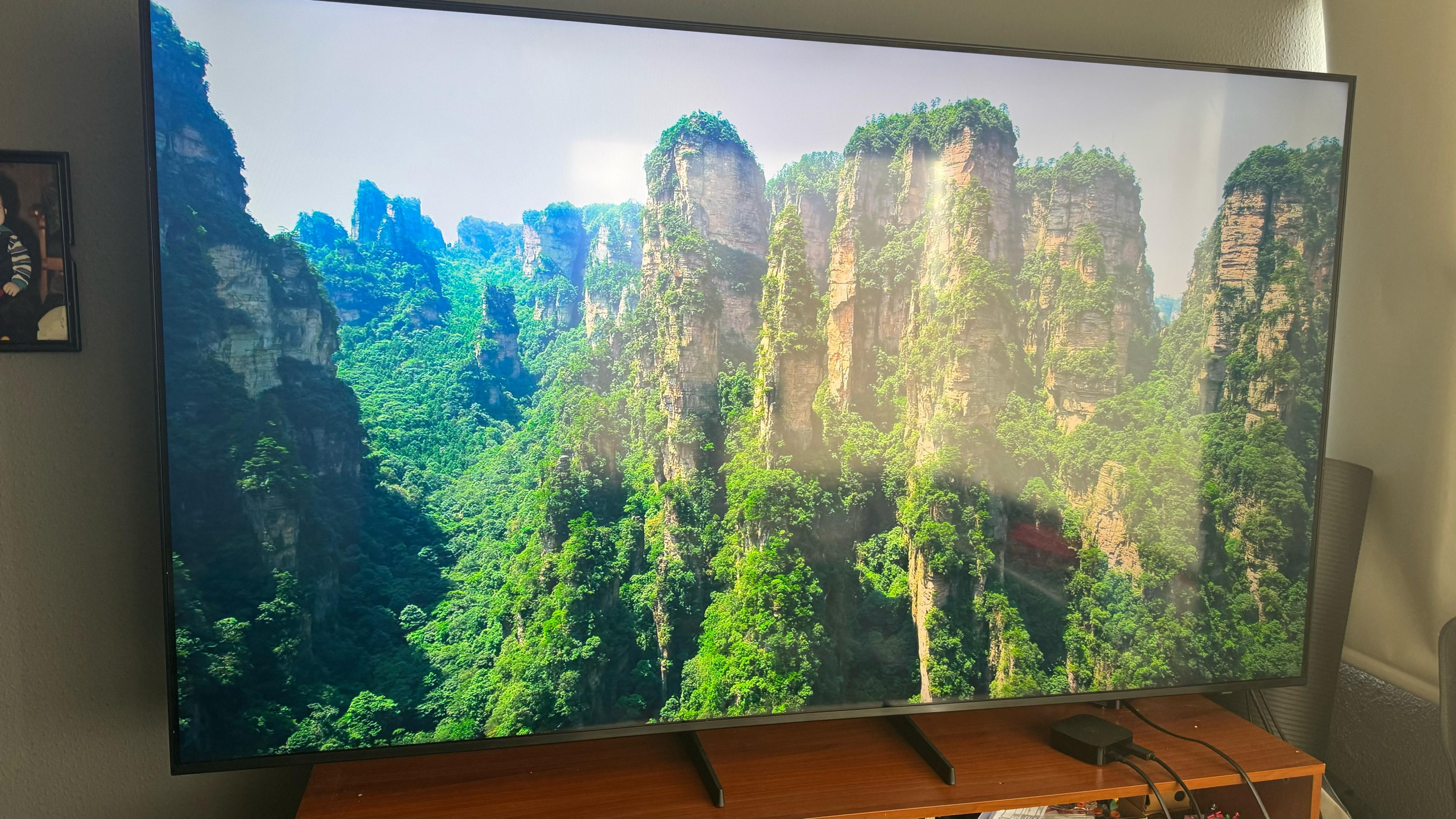Samsung QLED Q7F 75” (2025): a screen that understands how we live

When you live with a 75-inch screen for more than two weeks, the analysis goes beyond technical figures. It starts to matter whether the television becomes part of the space, whether what it displays is enveloping, whether the sound is good without being distracting, whether it truly integrates into your lifestyle.
Samsung's QLED Q7F isn't designed to show off: it's designed to accompany. And in that, it's exceptional.

Samsung QLED Q7F 75” (2025). Photo: EL TIEMPO
From the first moment, you can tell it's well-built. It's a big, heavy piece of equipment, yes, but that's far from being a problem; it inspires confidence.
The screen doesn't appear delicate or fragile; rather, it feels like it's built to last, to withstand the daily grind without fear. Once installed, thanks to its Slim Look design, black finish, and adjustable stand, it blends naturally into its surroundings, not the center of attention, but still at the top of its game. The fact that the remote control recharges with light also adds points : no more disposable batteries.
Picture quality is one of its strongest points. QLED technology, based on quantum dots, allows for 100% color volume, and it shows.
The colors are intense yet realistic , and thanks to the Q4 processor with artificial intelligence, you don't need to touch a single setting to make everything look just right. The image adapts automatically to the content and the ambient lighting. Day or night, with dim lights or open windows, the TV takes care of balancing brightness, contrast, and sharpness. Watching a movie, a series, or even the news becomes more fluid and more natural.
And when the content isn't ideal—such as 720p videos or older YouTube footage —the upscaling system does a thorough job. Yes, in dark areas, some pixelation can be noticed, with poorly blended blocks between shades of black, but in important elements—the subjects, moving objects, people—the image is clean, without jagged edges or distortions. That's a credit to the AI, which seems to know exactly what to focus on.
The sound is also surprising. With only 20W of power, one would think it would be limited, but it's well-balanced. The bass is present, filling the room without being overpowering. The vocals are crisp, and the effects are clear.
Object Tracking Sound Lite technology achieves subtle spatiality, Adaptive Profile adjusts the scene based on what you're watching, and Q-Symphony allows the TV sound to be complemented by a compatible soundbar. It's a sound that doesn't aim to impress, but to work. And it does. In my case, I didn't feel like I needed an additional soundbar.
When gaming, the Q7F delivers a smooth experience. Auto mode instantly detects the console and adjusts everything to optimize responsiveness. The Game Bar, which pops up with just a click, lets you check the frame rate, change the aspect ratio, activate zoom, or reduce input lag.
Although it has a 60Hz refresh rate—not 120Hz like other gaming-focused models—most games on consoles like Xbox Series or PS5 run at precisely 60fps, and the TV handles them smoothly.
For competitive games, I preferred to disable frame smoothing, as I experienced a slight amount of ghosting or lag. But for everything else, everything runs smoothly, and that's enough for uninterrupted enjoyment.
One of the features I liked most was the integration with SmartThings, both from the remote control and from the cell phone.
From the app, the TV becomes a sort of command center , where you can see all your connected devices represented as small windows or interactive icons: Apple TV, Xbox, PlayStation, a sound bar, lights, cameras, or even your air conditioner. And from there, from that clean and intuitive view, you can switch between sources, turn on and manage devices, and even fully control the interface of other devices.
Plus, it now includes a 3D map view of your home, allowing you to manage your ecosystem with clarity and context. Navigating the Xbox or Apple TV menu without touching their own controls becomes commonplace. And that sense of fluidity between devices is what closes the loop: everything is connected, everything feels part of the same ecosystem.
There are also small details that become apparent with use. Like the generative wallpaper, which allows you to create custom visuals by simply typing a few keywords. Or the gallery mode, which transforms the panel into a decorative piece. And if you activate the 3D map view on the screen, the TV becomes an interface from which to monitor and control the entire environment.
There's also a Karaoke mode, and features like Daily+ and Quick Remote that expand the device's usefulness for those who work remotely or use the TV as a daily assistant.
Even in terms of efficiency, there are thoughtful decisions: energy consumption is regulated by ambient light sensors, and AI Energy mode adjusts brightness based on viewing to optimize energy use without compromising the experience. Plus, it's made without toxic materials, and the SolarCell remote control helps reduce the environmental impact. In times where sustainability isn't an option but an obligation, that's also appreciated.
In the end, what I value most about this device is that it doesn't complicate anything. Everything is optimized to simply work. So you don't have to search for quality, but rather it comes naturally. It's a television that knows how to accompany: it doesn't demand, it doesn't distract, it doesn't overwhelm. It just adapts, adjusts, and makes itself available.
And that, in times when everything seems designed to attract attention, feels like a welcome respite. Because it's not always about having the loudest sound, but the most coherent. And the Q7F delivers.
eltiempo





